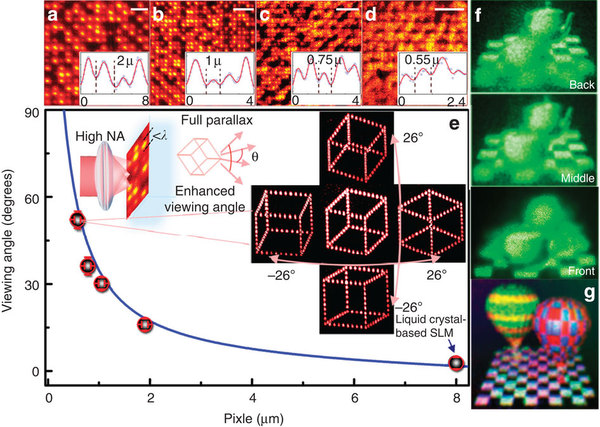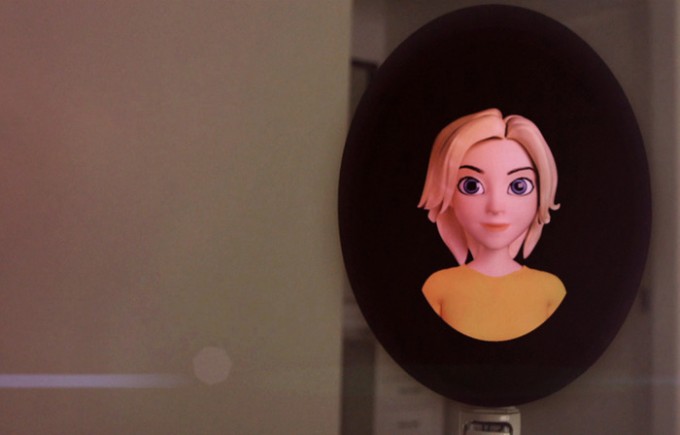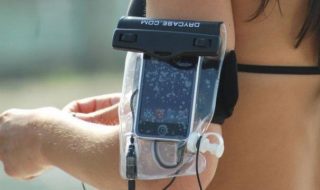
There has long been a symbiosis between science and science fiction. Many scientists and technologists are also science fiction fans who yearn to make the visions that have enthralled and inspired them as close to real as possible. Cynthia Breazeal, for instance, saw Star Wars when she was 10 years old and fell in love with the robots R2-D2 and C3PO. She eventually became a roboticist at MIT and hopes to create robots that can be as social and emotive as the ones in the movie.
Similarly, science fiction, including the Star Wars film series, has inspired a number of technologies. Since the first film debuted in 1977, generations of children have grown up to try and design real-life versions of droids and landspeeders. The newest movie will debut this Christmas and doubtless fire the imaginations of more youngsters.
3D Holographic Displays

Graphene produces a working 3D holographic display
Some technologies depicted in the films now exist in real life, while others are being researched or developed. Holograms, which the characters use for communication, are an example of a technology that actually exists. In 2011, the Manchester Airport used holograms to remind people about the rules concerning what could and could not be taken aboard airplanes. The holograms were two-dimensional and thus readily distinguishable from real people.
Aero-X Speeder Bikes
Crave – Coming soon: Commuting via Aero-X hoverbike, Ep. 160
The speeder bikes that wowed people during the chase scene in Return of the Jedi will one day become reality. A company called Aerofex is currently working on what it calls a “low-altitude tandem duct aerial vehicle.” The Aero-X will accommodate two people and go up to 42 miles per hour. It is expected to become available in 2017. Another company, Malloy Aeronautics, hopes to make the world’s first flying motorcycle.
Robotic Arms

This mind-controlled prosthetic robot arm lets you actually feel what it touches
Crude prosthetics have existed for generations. While people have been able to make weight-bearing artificial legs for some time, working artificial hands have been far more challenging. A company called Touch Bionics has developed a bionic hand called the I-Limb Pulse. It’s strong enough to be able to lift 200 pounds, and it offers far more sensitivity and control than other prosthetic hands. Its control is so fine that the user can tie their shoelaces with it.
Robots

Is the Personal Robot Finally Here?
Robots with personalities are also becoming a reality. 2009 saw the debut of Wakamaru, a Japanese-built robot butler that even looks a bit like C-3PO. Wakamaru serves food and keeps track of its owner’s schedule. It has a built-in phone and can thus call emergency services for its owner. It also comes programmed with an international dictionary that enables it to understand commands in almost any language.
PaPeRo, whose name is an acronym for “partner-type personal robot,” is a companion robot that can do almost anything: check social media, read email, play games and dance. It has webcams for eyes and can thus hold video chats with people. Not only can it understand voice commands, it can also pick up on mood by reading the stress in a person’s voice. Like R2-D2, which it resembles, PaPeRo comes with an attitude – it ignores people who yell at it.
Digital Personal Assistants

Facebook Is Adding A Personal Assistant Called “M” To Your Messenger App
“Personal assistants” like Apple’s Siri can be viewed as being akin to “protocol droids” like C-3PO. They are built into people’s computer or cell phone, and they can talk to the user. They also handle people’s e-mail and social media, manage their calendar, search databases and connect to various automated home appliances such as lights, security systems, and thermostats. These assistants can essentially do many of the same things a human secretary or personal assistant would.
Lightsabers

Is a Real Lightsaber Possible? Science Offers a New Hope
The galaxy’s coolest fictional weapon, unfortunately, will remain fictional for a while longer. Scientists at MIT and Harvard have managed to make molecules out of light and hypothetically could make things out of photons – but those objects would be microscopic. For now, people who want lightsabers will have to make do with a LED-powered model.
While some Star Wars technology remains in the realm of science fiction, scientists are gradually making other tech reality. The films have entertained fans for nearly four decades, and they have inspired a few to make science fiction into science fact.




